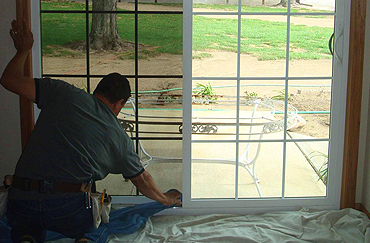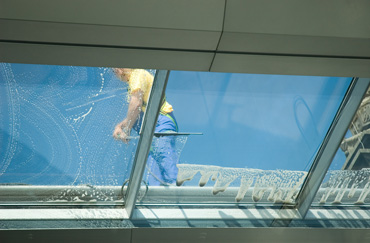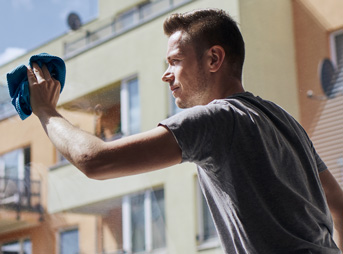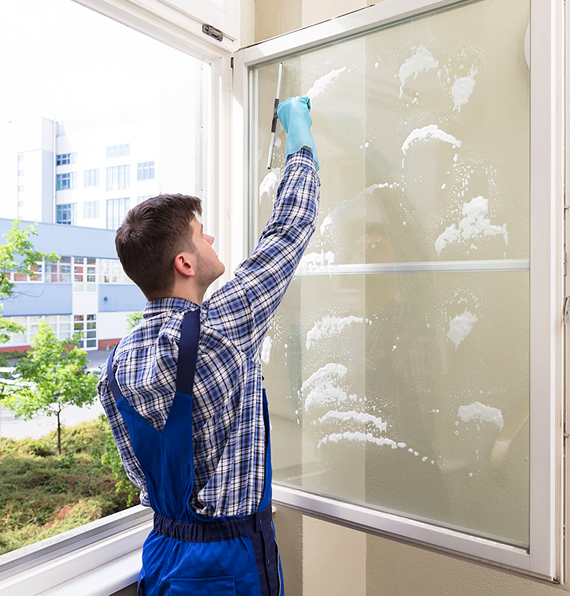Keeping windows clean can dramatically improve the appearance of your home or business, allowing more natural light in and offering a clear view of the outside world. While there are countless commercial glass cleaners on the market, many people are turning to DIY methods to avoid harsh chemicals and save money. That leads to one important question: what is the best homemade window cleaning solution?
The answer depends on your goals—whether you’re focused on streak-free shine, eco-friendly ingredients, or cost efficiency. In this article, we’ll explore what makes a great DIY window cleaner, compare popular homemade options, and explain how and when to use them for the best results.

Why Go Homemade for Window Cleaning
Before answering what is the best homemade window cleaning solution, it’s helpful to understand why DIY is so popular. First, homemade solutions are significantly more affordable than store-bought brands. Most of the ingredients used—such as vinegar, dish soap, and water—are already in your kitchen.
Second, DIY cleaners are often free from the strong artificial scents and harsh chemicals found in commercial products. If you have allergies, pets, or children in the home, reducing chemical exposure is a major benefit. Homemade mixtures are also eco-friendly, helping reduce plastic waste and the environmental footprint of mass-produced cleaners.
Lastly, the satisfaction of creating a safe and effective cleaner with your own hands is hard to beat. You’re not only maintaining your windows—you’re learning a skill and becoming more self-sufficient in the process.
The Science Behind Clean Windows
Windows attract a wide range of grime, including dust, water spots, pollen, fingerprints, bird droppings, and air pollution. The goal of any cleaning solution—homemade or store-bought—is to break down and remove this residue without leaving streaks behind.
The best homemade window cleaning solution should include a surfactant (a substance that breaks the surface tension of water, like dish soap), an acid (like vinegar or lemon juice to cut mineral buildup), and a diluting agent (such as water or rubbing alcohol to help everything spread evenly and evaporate quickly).
By combining these elements correctly, a DIY window cleaner can rival or even outperform commercial options. The trick is getting the right balance of ingredients so you clean effectively without streaking or residue.

The Most Popular DIY Window Cleaning Recipe
While there are many variations, one formula consistently stands out among homeowners and professionals. According to sources like The Spruce and Good Housekeeping, the following blend is widely considered one of the most effective:
- 2 cups of water (preferably distilled)
- 1/4 cup white vinegar
- 1/2 teaspoon of dish soap
This combination offers the perfect balance of degreasing, mineral breakdown, and quick drying. Vinegar cuts through hard water stains and residue, while dish soap removes oily smudges. The water helps dilute the mixture and provides a streak-free finish when wiped properly with a microfiber cloth or squeegee.
This formula is often regarded as the best homemade window cleaning solution because it’s safe, inexpensive, and easy to make. However, minor adjustments can enhance its performance depending on your window type, weather, and personal preferences.
Variations for Different Needs
Even though the above mixture is a solid go-to, there are slight tweaks that can improve results depending on your conditions.
In humid climates, drying windows quickly becomes more difficult. For those areas, adding a tablespoon of rubbing alcohol can speed evaporation and reduce streaks. This is especially helpful for exterior windows in coastal or tropical regions.
If you’re cleaning windows exposed to greasy kitchen air, such as those near stovetops, increase the amount of dish soap slightly to cut through film buildup more effectively. On the other hand, for glass surfaces that only need light dust removal, a 50/50 mix of vinegar and water may be sufficient without any soap at all.
Some people also swear by adding cornstarch to the solution. The idea is that the fine particles act as a gentle abrasive, breaking up debris without scratching the glass. According to Bob Vila, adding just one tablespoon of cornstarch to your basic mix can improve clarity—though this should only be done if you’re prepared to wipe carefully and rinse.

What to Avoid in Homemade Window Cleaners
As you experiment with recipes, it’s important to know what not to use. Ammonia, though effective at cutting grease, can be dangerous to breathe in and should not be mixed with bleach or vinegar due to toxic fume risks. Bleach, likewise, is too harsh for glass and can damage nearby frames, walls, or plants.
Avoid using tap water, especially if your area has hard water. Minerals in untreated water can leave behind cloudy residue or streaks. Opt for distilled water when possible to ensure a clear, spot-free finish.
Essential oils, though often added for fragrance, should be used sparingly. Some oils can leave behind film or attract dust, especially citrus-based oils that may also degrade certain types of window seals if applied repeatedly.
Application Techniques Matter as Much as the Solution
Even the best homemade window cleaning solution won’t perform well if applied incorrectly. Using a clean microfiber cloth, lint-free paper towel, or professional-grade squeegee is essential for avoiding streaks. Start from the top of the window and work your way down to catch drips.
On very dirty windows, consider a two-step process: first, wipe down with plain water and a cloth to remove surface debris. Then apply your DIY solution and clean thoroughly. This method prevents dirt particles from scratching the glass or interfering with the cleaner’s effectiveness.
Cloudy days are ideal for cleaning windows because direct sunlight causes the solution to dry too quickly, increasing the chance of streaks. Working in shade or during cooler hours gives you time to wipe properly without rushing.
What Professionals Say About Homemade Window Cleaners
Many professionals, including those of us at D&L Window Cleaning, have tried and tested homemade solutions. While we use commercial-grade products for high-volume work, we often recommend DIY solutions for light maintenance between visits. For homeowners who want to keep their windows clean on a weekly or monthly basis, a good vinegar-based formula can go a long way.
In fact, the best homemade window cleaning solution we’ve seen for daily or weekly touch-ups is a simple mixture of vinegar, distilled water, and a drop of dish soap applied with a microfiber towel. It works beautifully on residential windows, mirrors, and glass tables without requiring expensive products.
Still, for higher windows, multi-story homes, or tough build-up like hard water stains or algae, professional service is safer and more effective. The American Cleaning Institute recommends using trained cleaners for jobs that involve ladders or chemical exposure.

Final Thoughts: What Is the Best Homemade Window Cleaning Solution?
If you’re asking what is the best homemade window cleaning solution, the most widely trusted and effective answer remains a simple mix of water, white vinegar, and dish soap. It’s affordable, safe, and powerful enough to handle most household grime without the need for commercial cleaners.
For those who want a streak-free, eco-conscious, and budget-friendly approach to glass care, this DIY method delivers. With the right tools and application techniques, your windows will look professionally cleaned—no expensive equipment required.
And if you’re located in Lake County, especially near Painesville, Ohio, and want that sparkling finish without the effort, D&L Window Cleaning is just a call away. We’re proud to offer top-rated local service backed by hard work, attention to detail, and a community-first attitude.
Helpful Resources:

